

Copyright 2013 by Paul Marsden and Paul Chaney. All rights reserved. Except as permitted under the United States Copyright Act of 1976, no part of this publication may be reproduced or distributed in any form or by any means, or stored in a database or retrieval system, without the prior written permission of the publisher.
ISBN: 978-0-07-180203-1
MHID: 0-07-180203-7
The material in this eBook also appears in the print version of this title: ISBN: 978-0-07-180202-4, MHID: 0-07-180202-9.
All trademarks are trademarks of their respective owners. Rather than put a trademark symbol after every occurrence of a trademarked name, we use names in an editorial fashion only, and to the benefit of the trademark owner, with no intention of infringement of the trademark. Where such designations appear in this book, they have been printed with initial caps.
McGraw-Hill eBooks are available at special quantity discounts to use as premiums and sales promotions, or for use in corporate training programs. To contact a representative please e-mail us at bulksales@mcgraw-hill.com.
TERMS OF USE
This is a copyrighted work and The McGraw-Hill Companies, Inc. (McGraw-Hill) and its licensors reserve all rights in and to the work. Use of this work is subject to these terms. Except as permitted under the Copyright Act of 1976 and the right to store and retrieve one copy of the work, you may not decompile, disassemble, reverse engineer, reproduce, modify, create derivative works based upon, transmit, distribute, disseminate, sell, publish or sublicense the work or any part of it without McGraw-Hills prior consent. You may use the work for your own noncommercial and personal use; any other use of the work is strictly prohibited. Your right to use the work may be terminated if you fail to comply with these terms.
THE WORK IS PROVIDED AS IS. McGRAW-HILL AND ITS LICENSORS MAKE NO GUARANTEES OR WARRANTIES AS TO THE ACCURACY, ADEQUACY OR COMPLETENESS OF OR RESULTS TO BE OBTAINED FROM USING THE WORK, INCLUDING ANY INFORMATION THAT CAN BE ACCESSED THROUGH THE WORK VIA HYPERLINK OR OTHERWISE, AND EXPRESSLY DISCLAIM ANY WARRANTY, EXPRESS OR IMPLIED, INCLUDING BUT NOT LIMITED TO IMPLIED WARRANTIES OF MERCHANTABILITY OR FITNESS FOR A PARTICULAR PURPOSE. McGraw-Hill and its licensors do not warrant or guarantee that the functions contained in the work will meet your requirements or that its operation will be uninterrupted or error free. Neither McGraw-Hill nor its licensors shall be liable to you or anyone else for any inaccuracy, error or omission, regardless of cause, in the work or for any damages resulting therefrom. McGraw-Hill has no responsibility for the content of any information accessed through the work. Under no circumstances shall McGraw-Hill and/or its licensors be liable for any indirect, incidental, special, punitive, consequential or similar damages that result from the use of or inability to use the work, even if any of them has been advised of the possibility of such damages. This limitation of liability shall apply to any claim or cause whatsoever whether such claim or cause arises in contract, tort or otherwise.
For digital entrepreneurs
CONTENTS
Introduction
Its all about the money, the rest is just conversation.
GORDON GEKKO, WALL STREET
How do I sell with social media? Its a deceptively simple question, and one that an increasing number of businesses, brands and entrepreneurs are asking today. Its also a question that we chose to dodge during one of our social media workshops back in 2010. Our evasive reply was that it was the wrong questionsocial media was not about selling, it was about connecting, collaborating, and communicating more effectively.
Two years and one blogSocial Commerce Todaylater, were now ready to answer the question properly. The Social Commerce Handbook is our answer to the question of how to sell with social media. It is a practical handbook for businesses and entrepreneurs looking to turn social media into social sales. In 20 bite-size chapters, well reveal 20 secrets to unlocking sales with social media from pioneers in the new field of social commerce; selling with social media.
SHOW ME THE MONEY!
If youve picked up this book, you probably already get social media. You realize that social media, online media is big media; one in nine humans use YouTube every month and more, one in seven, use Facebook. So you get that social media is emerging as an important media channel for reaching and interacting with your customers and prospects. Whether theyre busy polishing their rsums on LinkedIn, sharing business smarts and ideas on Quora, sharing content on Instagram, Pinterest, or YouTube, or sharing their lives on Facebook, social media is where youll increasingly find your customers.
And if you get social media, you see beyond the hype and spin of social media zealots and realize that social media is not a revolution. Its just mediawith its own peculiar advantages and disadvantages. Its fast, relatively scalable, interactive, and supports multimedia content. But its also uncontrolled, uncontrollable, and largely unproven as an effective medium for advertising. Nevertheless, as a medium for word of mouth, social media is incredibly effective, and as a business youll know that word of mouth matters. We live in a recommendation economy where reputation is everything, and reputation is not built on what you say about yourself, but what other people say about you.
For example, a recent cross-industry analysis by the consulting firm Bain found that the most recommended business in any competitive set grows far faster (two and half times as fast, on average) than its competitors.Social media has commercial value for your business because social media unleashes word of mouth, allowing more people to recommend more, more easily, and to more people. Put simply, social media matters to your business because it is word of mouth on steroids.
So, while you may get social media and why it matters, you may not yet get how to make social media pay. Sure, you can treat social media like traditional media and sink advertising money into it. Or you can spend money, time, and resources on social media by using it as an online channel for customer service or relationship marketing. But how do you make money, rather than spend money on social media? Social commerce offers a simple answer: Use social media as a smart sales channel and youll sell better, faster, and more efficiently than ever before. Thats the promise of social commerce.
WHAT IS SOCIAL COMMERCE ANYWAY? FROM MOLIRE TO MADE.COM
So what exactly is social commerce? In short, social commerce is selling with social media, online media that supports social interaction and user contributions. Its selling with the current Big FiveYouTube, Pinterest, Twitter, Facebook, and LinkedIn, as well as through other social media platforms such as Quora, Instagram, and Google+.
Interestingly, however, the term social commerce itself was first used in a literary critique of the seventeenth-century French playwright Molire. Social commerce is about using social media as transactional media to complete sales transactions, but in some of the most innovative cases of social commerce, no money changes hands.
Since becoming popular in 2005, the term social commerce has evolved to mean any kind of commerce that uses user content to sell. So social commerce can range from e-commerce on social media sites, to social media features on e-commerce sites. And through mobile devices, social commerce is venturing into traditional brick-and-mortar commerce, allowing people to connect, collaborate, and even transact together when they shop in store.
Next page

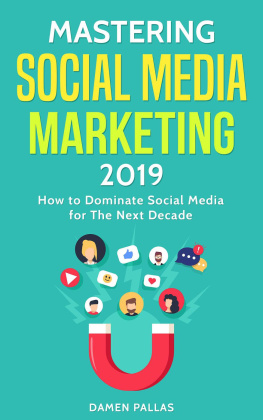


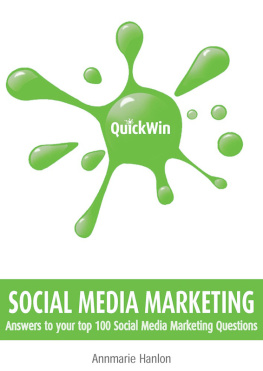
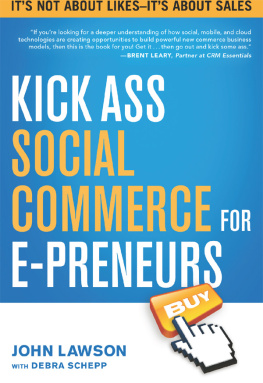
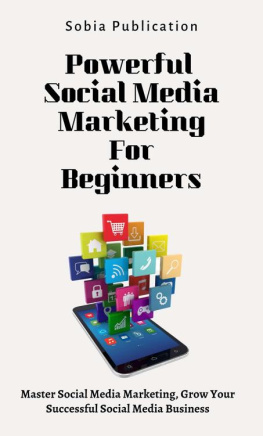
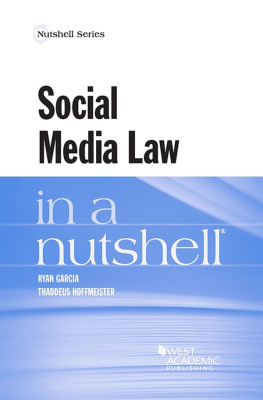

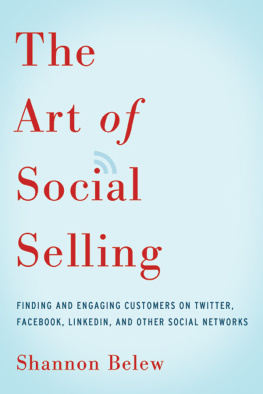
![switching.social [switching.social] - The Switching Social Handbook](/uploads/posts/book/131346/thumbs/switching-social-switching-social-the-switching.jpg)

